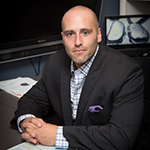“I studied landscape architecture as an undergraduate and received my masters in architectural studies in Texas. After initially working as a landscape architect in Austin and teaching at the University of Georgia, I wanted to experience the Pacific Northwest and decided to move to Seattle.
My career in Seattle was focused on the built environment, particularly green building and design. During the 13 years I was there, I led the city’s green-building program and worked for CollinsWoerman.
My decision to return to Austin was based on my strong desire to return home and make a difference here—as well as the opportunity that arose with the creation of Austin’s first chief sustainability officer position and the newly formed Office of Sustainability.
Developers, architects, and builders in Austin are fairly sophisticated about sustainability matters. Our buildings get the bells and whistles—lots of solar panels, for example—but we also are trying to focus more on where we build to reduce sprawl and create more compact and connected neighborhoods. We still have mobility challenges overall, so we have upped our game on bus rapid transit and car- and bike-share programs and continue to build an extensive trail system that is friendly to bikers and pedestrians.
Perhaps Austin’s greatest green feature is the large amount of land that has been preserved. We have one of the largest urban forests in America, and Lady Bird Lake provides a variety of recreational opportunities right in the heart of the city. Austin is one of the top 10 cities for wildlife, including a very large urban bat colony that is a draw to tourists.
We have invested in green infrastructure that helps protect water quality in local aquifers, creeks, and rivers—however, it’s not enough to prevent flash flooding in intensifying storm events. To address this problem, we are analyzing our public infrastructure systems to assess how prepared we are for extreme weather and climate change.
One of the city’s key initiatives is rewriting the land-development code to align with the Imagine Austin comprehensive plan and create denser transit centers and diverse housing choices. For example, the new, urbanist Mueller neighborhood, located on the site of Austin’s former airport, provides density, connections to transit and ample walking and biking trails, green space, and a mix of housing types as well as office and retail buildings. It’s a model for how Austin wants to grow in the future.
Are there resistors to these efforts? Sure, but my strategy is to work with people who want sustainability and let what they do serve as an example to others. I’m a provocateur, engaging with decision-makers to consider and adopt sustainable options by partnering with the city. Our office’s brand is “rethinking,” pushing the idea that sustainability is a process, not a product.
As told to Russ Klettke


